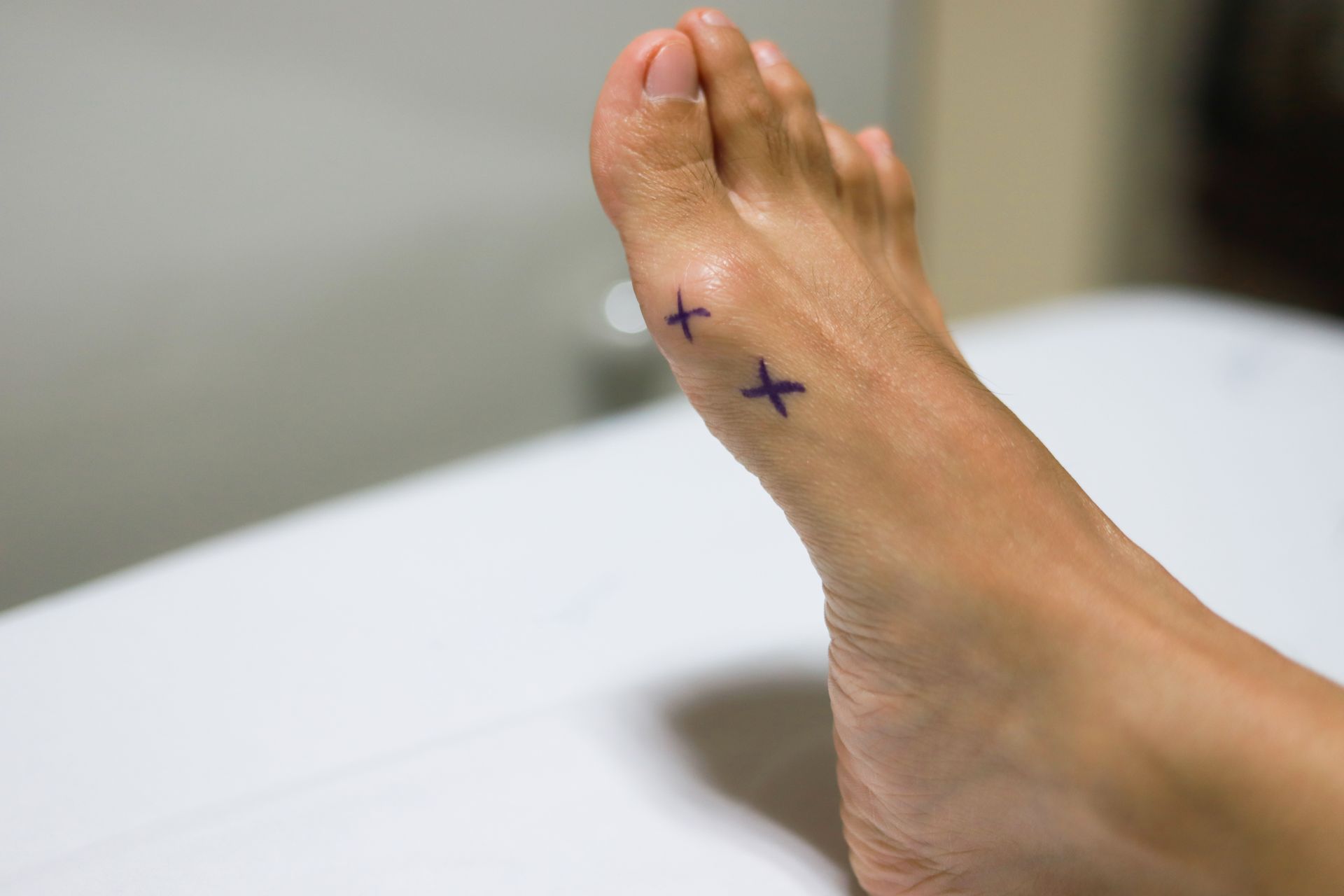Treatment and Recovery for Plantar Fasciitis Surgery
Plantarfasciitis is a tendinitis along the bottom of the foot. It typically presents as pain at the bottom of the heel or along the arch. Often patients describe “first-step” pain when getting out of bed in the morning that eases with activity and recurs after short-intervals of rest.
How often is Surgery Necessary for Plantar Fasciitis?
Plantar fasciitis is extremely common, and the overwhelming majority are treatable without surgery. However, between 3-5% of patients suffering from plantar fasciitis will not obtain relief with non-surgical treatment. For this small portion of patients, there are several surgical treatment options. The most commonly performed surgery for recalcitrant plantar fasciitis is an Endoscopic Plantar Fasciotomy (EPF).
How Successful is Plantar Fasciitis Surgery?
Endoscopic Plantar Fasciotomy (EPF) has a roughly 90% success rate. Other surgical procedures also have good success rates and come with their own advantages and disadvantages. Preference for these variations of plantar fasciitis surgery will vary among individual surgeons based on factors such as level of expertise and patient outcomes.
Who is a Good Candidate for Plantar Fasciitis Surgery?
It is important to exhaust all non-surgical options before considering surgery. Treatment of plantar fasciitis begins with a detailed foot examination by an expert in the condition. This can be a podiatrist who is board-certified by the American Board of Foot and Ankle Surgery (ABFAS) or an orthopedist with sub-specialty training in the foot and ankle. The examination typically includes weight-bearing x-rays, helps confirm the diagnosis, and establishes an initial treatment plan.
There are many non-surgical options for plantar fasciitis. A partial list includes: arch supports, stretching, ice, non-steroidal anti-inflammatory drugs (NSAIDs), cortisone injection, physical therapy and immobilization in a walking boot. It is recommended to perform a 6 to 8-month trial of non-operative treatment before considering plantar fascia surgery.
In some cases of recalcitrant plantar fasciitis, an MRI is used to help confirm the diagnosis and eliminate other potential conditions before proceeding with surgery. A specialized test called a Nerve Conduction Study can also be used to help eliminate a neurologic or lower-back etiology that will occasionally create foot pain .
What is the Surgery For Plantar Fasciitis?
The previously mentioned EPF is currently the most common surgery performed for plantar fasciitis. This is an outpatient surgery that only takes 15 to 20 minutes to perform. An EPF can be done with general anesthesia or sedation (twilight sleep). The surgery involves a small incision (roughly one centimeter) on either side of the heel. A surgical scope, or small camera, is placed in one incision and a small surgical hook is placed in the other incision. While fully visualizing the plantar fascia with the camera, the hook is used to cut a portion of the fascia. The hook and the camera are removed, and the incisions are closed with one or two stitches. There are no implanted materials during this procedure. The purpose of an EPF is to release a tight or contracted plantar fascia. The cut portion lengthens roughly one inch and heals in this lengthened position during the recovery.
What is the Recovery for Endoscopic Plantar Fasciotomy (EPF)?
This is not usually the most painful surgery, but there will be some discomfort. The first portion of the recovery requires two weeks of non-weightbearing on the operative foot. Non-weightbearing can be aided by crutches, a walker, rolling knee scooter or a wheelchair. After the initial two weeks of non-weightbearing, patients are allowed to progressively add pressure to the foot while wearing a walking boot. This stage of the recovery takes four weeks. Because of where the plantar fascia is located on the foot and the way pressure is distributed along the bottom of the foot, it is important not to “over do it” during this time. Too abrupt an increase in activity can delay the overall recovery. At 6 weeks post-operative, most patients are ready to transition from the walking boot to a supportive shoe, like a tennis shoe. It is typically 10weeks from the time of the surgery when patients begin recreational physical activity.
If you have been suffering from the pain of plantar fasciitis and are curious if surgery could be a viable treatment option for you,
contact our office to request an appointment. Together, we can reach a definitive diagnosis, map out the most appropriate course of treatment, and address surgical options if needed.


